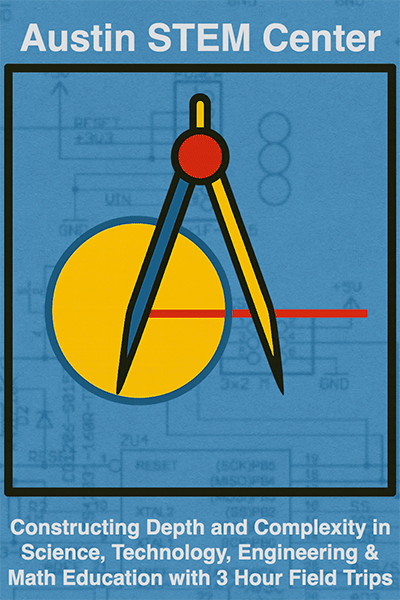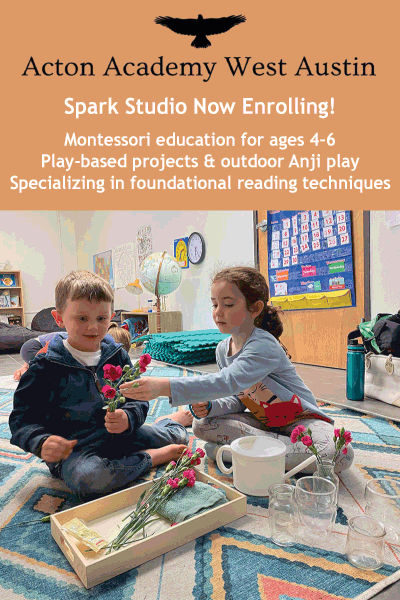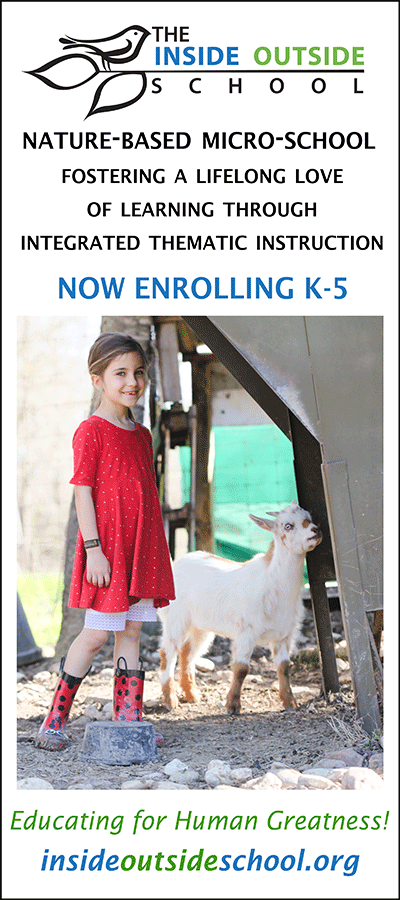What I learned at the Education Reimagined Symposium 2019: #whyLCE
/I was excited to learn recently that a new learner-centered school, Gantry Academy, is launching soon in Round Rock. Soon after, I had the serendipitous pleasure of meeting its founder and director, Jennifer Phillips, at the Education Reimagined Symposium in Washington, D.C. It was the best education conference I’ve ever attended, and I’m grateful that Jennifer offered to share her takeaways and insights from the symposium in this guest post. —Teri Sperry
The time is now. Kelly Young, president of Education Reimagined, at the organization’s symposium, January 17, 2019.
While many parents feel that the standard modern education system doesn’t work for their child, we might not know that there is another way. We just have this nagging feeling that our children are not widgets to be produced by an educational factory. So, some of us are moving to private schools, where lower ratios and individual attention give us hope for a better outcome. But then we hop from school to school, looking for the right fit that we can’t articulate, only knowing that something about each offering is just not working for our child. What we are developing alone together is the concept that education should start with the learner, rather than the institution.
Education Reimagined hosted a one-day symposium in Washington, D.C., on January 17 focused on sharing the message of Learner-Centered Education (LCE). There were over 200 educators, philanthropists, vendors, and learners present; chances are you missed it, quite possibly just because you haven’t even heard the term LCE, and you aren’t alone.
A true learner-centered education is more than a majority consensus on a thematic unit topic. It allows each learner to strive for mastery at their own pace (competency-based), with personalized, relevant, and contextualized content that they themselves engage in designing (learner agency). It is rooted in meaningful relationships (socially embedded) and it does not stop in the classroom (open-walled).
As it turns out, I was sent to the symposium because the educational goals I have for my own children align directly with the purpose of Education Reimagined. This organization is fully committed to transforming all education into the learner-centered paradigm. I didn’t realize it before, but my family is just a small piece of a much larger movement. I knew intrinsically what I wanted education for my girls to look like. I could describe it to other parents as “learner-driven” or “passion-driven” or even a “hack school” model, and I could cite specific studies supporting this approach, but what I lacked was the common vocabulary and the knowledge of the sheer magnitude of the existing efforts pushing in the same direction.
After a full day of immersion with these passionate, dedicated innovators, I came away inspired and recommitted to building a better educational method for every single child! It may sound fantastical or like an unreachable goal, but here are my top takeaways from the symposium that make this dream possible.
1. This is not a “fancy liberal fad.”
At the conference, I spoke with leaders from both private programs and public school districts, from northern states like Vermont and from heartland states like Missouri. I was not the only person from Texas there. The idea that each person is unique and learns best in their own unique way has so much research to back it up that LCE is not just trending; it’s only a matter of time before it is the new standard. How can anyone make that claim? It’s already happening in most other major industries, from personalized television programming from Netflix and Hulu, to personalized medications based on your DNA. Personalized education is not just preferable; it’s inevitable.
Jasmine McBride, a student who spoke at the symposium about her experiences in a learner-centered high school.
2. Kids are people NOW.
While this may sound like an obvious statement, how many times have you heard “Children are our future?” Implying that age limits the usefulness of a person is not only harmful but also wasteful. There are now high school students who are published authors, Emmy award winners, and mentees of Broadway superstars, all thanks to their experiences with LCE. Learner agency, the ability for a student to make decisions about their own education, seems to generate one particularly interesting outcome (among the many additional benefits): sense of self. Self-confidence. Self-esteem. Self-efficacy. I heard from the young learners I spoke with directly that even one year in an LCE program can have a major lifelong impact. The more this seed grows in learners now, the more exponentially it will take off as they take on leadership roles in the community.
3. This is the best-kept secret in your neighborhood.
Remember when I mentioned that we are each developing this feeling “alone together”? The latest study shows that up to 60 percent of the public feels that education should be aimed at preparing individual learners for personally fulfilling lives. And yet, those same people think that only 5 percent feel the same way! Start the conversation with those around you. Even if they don’t have the same vocabulary, it’s something we can discuss together rather than in isolated pockets.
What can I do for my child NOW?
First, read about Learner-Centered Education at Education Reimagined to learn more about the national conversation happening now. Familiarize yourself with the vocabulary so we can all be having the same conversation locally as well as nationally. Decide if a fully personal, engaging educational path is right for you or your child.
Second, act locally! While some public schools near us have shifted to competency-based report cards and portfolio assessments, they are still required to teach to the standardized tests. Work with your PTA to encourage change within your school. Some private schools are run democratically. Take a proposal to your leadership circle to discuss the LCE concept in depth.
Third, drop in to one of the regular workshops hosted by Gantry Academy to help us develop the LCE method that best offers custom, individualized programs to each learner right here in Round Rock, Texas!
[For a more comprehensive review of the symposium’s specific events, read Suzanne Freeman, Ph.D.’s blog post here.]
Jennifer Phillips
























